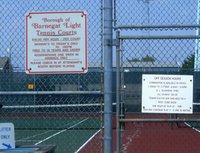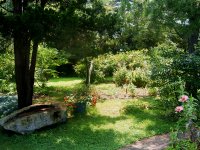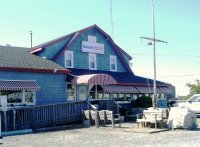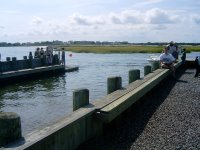...from the Beach

The last three days have been dreary and gray. Not exactly picture taking weather. But as I sit here and listen to news of Ernesto in Florida - of and of the even stronger John, bearing down on Acapulco - and of a Pacific typhoon (name unpronouncable) which threatens to wipe Wake Island off the map - I felt that one additional tribute to our gorgeous dunes was in order.
As you head back towards 12th Street from the water's edge it's all uphill. Just getting from the water to the life guard's chair requires climbing up over the ledge at the water line and then slogging through dry powdery sand which th
 reatens to stay your feet at each step.
reatens to stay your feet at each step.Then its back over the lower dune area, with its grasses, crossroads in the sand and litter and recyclin
 g barrels stategically sprinkled throughout. I can't resist the chance to present one more natural beach grass masterpiece.
g barrels stategically sprinkled throughout. I can't resist the chance to present one more natural beach grass masterpiece.And onward to the end of the first boardwalk, up that last big dune, which seems much higher than when you came to the beach earlier- making you so glad you resisted the urge to carry non-essentials
 with you . Then, after you finally reach those benches which look so far up in the sky, you still have to go down the other side of the dune and walk through the denser vegetation on the street-side boardwalk - and a block and a half back to the house. It's a long trek, and discourages everyday beach going - but at times like this as we hear storm news on all sides we are s-o-o-o grateful for our beautiful dune area.
with you . Then, after you finally reach those benches which look so far up in the sky, you still have to go down the other side of the dune and walk through the denser vegetation on the street-side boardwalk - and a block and a half back to the house. It's a long trek, and discourages everyday beach going - but at times like this as we hear storm news on all sides we are s-o-o-o grateful for our beautiful dune area.P.S. Rafito is in Miami as I write so you soon may get some more professional looking views of the Island once he arrives.
















































